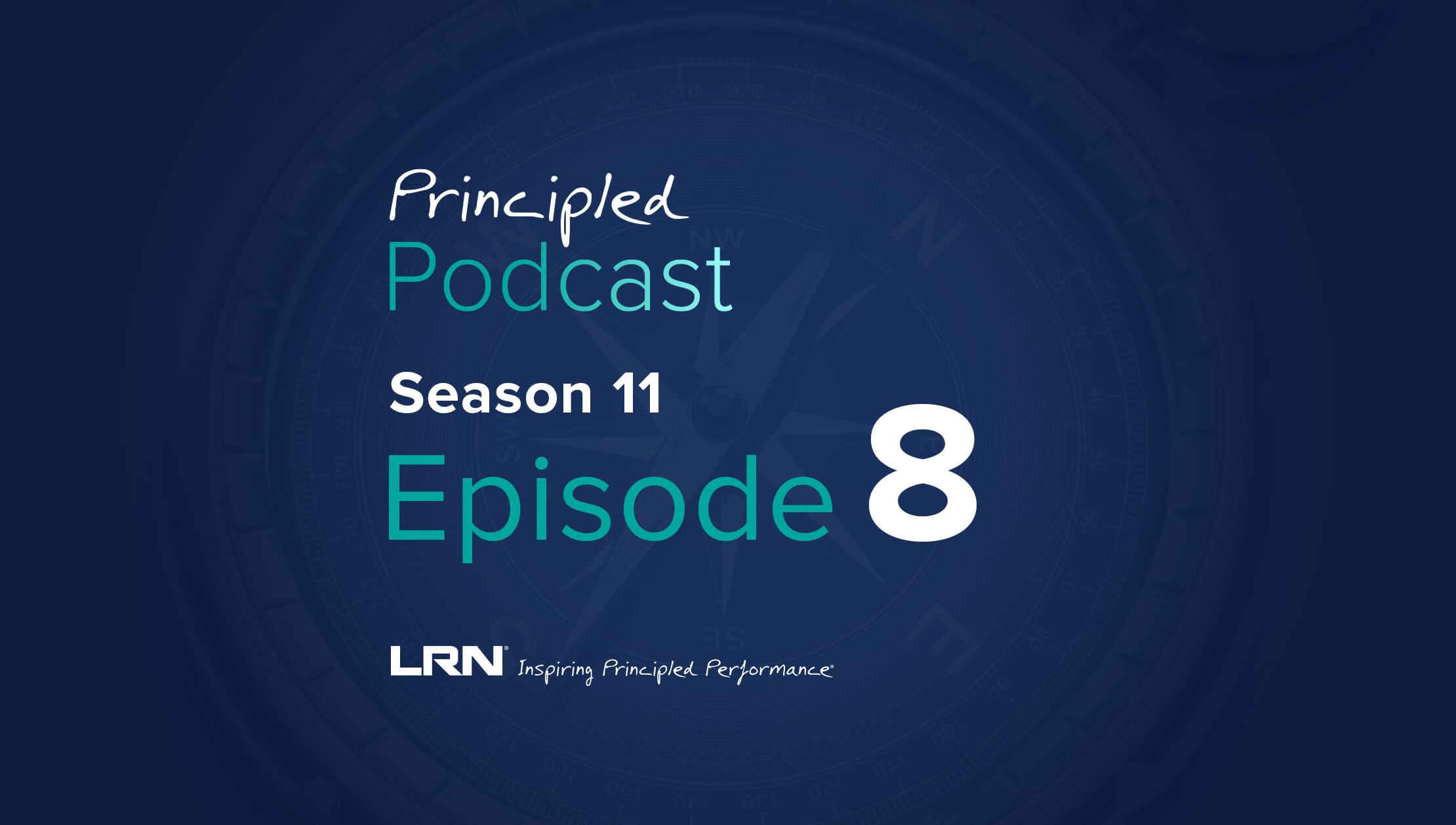Every organization needs a code of conduct. An effective code of conduct helps spell out an organization’s purpose and values to all stakeholders, regardless of company size, industry, or for-profit/non-profit status. It also provides insight into how organizations live their values: how people behave, make decisions, pursue goals, and ensure integrity, honesty, respect, and fairness across the enterprise. It is—quite literally—the very foundation of a company’s ethical corporate culture.
By serving as an external statement of commitment to specific corporate values, a code of conduct also mitigates the risks of non-compliance with ethical requirements and regulations. The question that remains for organizations, however, is: how do you know if you have an effective code of conduct?
The 2023 LRN Code of Conduct Report helps define this by sharing eight dimensions for code effectiveness. Evaluating nearly 200 codes of conduct deployed by companies around the world, this report presents a set of best practices in code design and implementation. It also provides a powerful benchmark for companies to assess the effectiveness and impact of their own codes. This research supports LRN’s view that codes of conduct are foundational in the development and management of ethical corporate cultures and in meeting rising stakeholder expectations for ethical workplace conduct.
What is a code of conduct?
A code of conduct is a document that defines your organization's character and culture. It tells who you are, what you believe in, and why you are in business. Codes form the foundation of an ethics and compliance (E&C) program. A code of conduct speaks of your organizational values and the path you follow to live up to those values. That means a code of conduct influences the organization's culture in terms of how its stakeholders behave, make decisions, and pursue business objectives to safeguard integrity, respect, fairness, and honesty.
However, drafting a code of conduct does not automatically change the culture of your organization. For you to achieve these benefits, you need an effective code of conduct. To help you develop an effective code of conduct, LRN has identified eight dimensions that serve as crucial guideposts as you assess your own code.
In addition to the eight dimensions of code effectiveness, the LRN Code of Conduct Report explores the difference between codes that just exist on paper and codes of conduct that work in practice for organizations. These examples demonstrate the importance of focusing on values rather than rules when drafting a code of conduct.
About the LRN Code of Conduct Report
LRN assessed the codes featured in this report using our proprietary Code of Conduct Assessment Tool, originally established in 2015 and updated over time to reflect the latest regulatory and best practice guidance, as well as our 27 years of experience and research into ethical culture and ethics and compliance program effectiveness. The tool yields a concrete, objective, and comprehensive measurement of excellence based on 47 questions that map to eight dimensions of code effectiveness.
Specifically, we looked at the top 40 companies in the CAC (France), DAX (Germany), FTSE (UK), NIK (Japan), SGX (Singapore) and S&P (USA) stock exchange listings; 195 out of the 240 companies had publicly available codes, which formed the basis of our analysis. We wanted this report to be international in scope. At the same time, we are acknowledging that corporate ethics and compliance programs should have reached a substantial level of maturity in these regions due to a preponderance of regulation and stakeholder expectations.
8 dimensions of code effectiveness
Our assessment of code effectiveness shows that organizations listed in the S&P 500 Index generally have more effective codes. On the other hand, companies listed on Singapore’s STI 30 generally report the lowest effectiveness in their codes. There is also a correlation between a firm's size and code effectiveness. Larger firms have more effective codes than smaller ones. Smaller firms, however, find it easier to adjust the effectiveness of their codes compared to larger organizations. Regardless of company size, the eight dimensions listed below provide a valuable framework for developing an effective code of conduct.
1) Tone from the Top
The success of an E&C program depends on an organization's code of conduct. LRN's years of experience and research have also shown a relationship between the top management's approach to the code and its effectiveness. The C-suite understands the risk of non-compliance and takes measures to mitigate them. Their mitigation effects cascade down to the rest of the employees, which inspires them to stick to ethical practices and organizational values. An effective code should, therefore, have a leadership message that inspires the rest to follow a set of values.
2) Purpose and Values Orientation
An effective code naturally defines the purpose of an organization and the values on which it is founded. Effective codes are, therefore, some of the best tools for meeting an organization's environmental, social, and governance objectives. Our research shows that 78% of more effective codes uniquely link their purpose, values, and business activities.
3) Applicability and Administration
The code should identify whom it applies to and how it is administered. It should outline the responsibility and expectations of each employee. When the code applies equally to all the employees regardless of their rank, the workforce develops a collective responsibility. The collective responsibility and expectation eventually grow into a culture of transparency and justice. While 83% of all codes expressly state they apply to the entire workforce, only 17% of all codes explain their administration in case of misconduct.
4) Speaking Up
The fourth dimension of an effective code is that it encourages the stakeholders to voice their concerns and seek clarification/advice on various issues in the organization. Our research shows that most codes encourage stakeholders to speak up, but few include hotlines or helplines.
5) Risk Topics
An effective code helps stakeholders identify E&C risks, which makes it easy to mitigate them. Your code should clearly outline the risks and ways of avoiding them. 88% of more effective codes are very clear on ethical and compliance risks, while 35% of less effective codes are vague.
6) Knowledge Reinforcement
For codes to be effective, they should form part of employees' knowledge resources and references whenever they are faced with ethical dilemmas. However, research shows that only 7% of all codes effectively act as sources of knowledge on various ethical topics.
7) Usability
There is no point in developing a code of conduct if your employees experience challenges accessing it. An effective code should not only be accessible, but presented in a language and manner that is easy to read, navigate, and understand. You can include links to other resources to make it easier for your employees to use the code.
8) Look and Feel
The look and feel aspect of a code means anyone reading it can connect with your organization's values. The code should visually engage its readers through the inclusion of eye-catching images of your workforce, products, and other aspects of your business. In short, the code should display your brand.
Examples of an effective code of conduct
Our assessment of various codes ranked General Motors, 3M, and Hoya Corporation at the top over other organizations when it comes to code of conduct effectiveness. The three companies have codes that are visually appealing to any reader. These codes reflect the unique aspects of each company, culture, and brand. The codes also carry a communiqué on how they help the organizations achieve their overall goal and the values the companies stand for.
The key takeaway
Ethics and compliance officers and risk-management professionals recognize the importance of an effective code of conduct. They are constantly looking for ways to improve their codes of conduct and make them more relevant and useful. If you are looking for further ideas, examples, benchmarks, and insights to improve your code's effectiveness, download the 2023 LRN Code of Conduct Report to get started.



